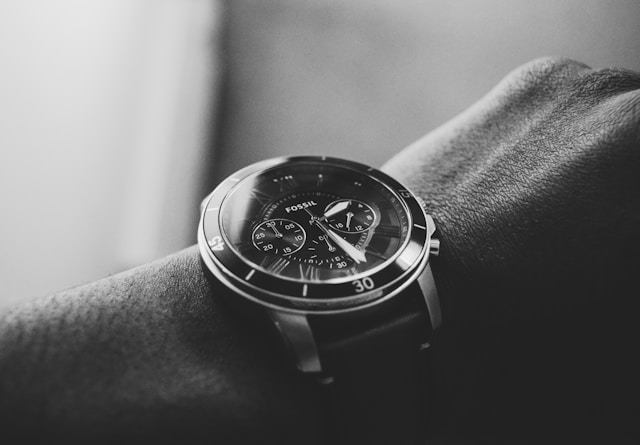The story of wristwatches is worth telling, and it span over a century of innovation, fashion & technological advancement. Started as a mere instrument capable of timekeeping and continues to build up into an emblem of class, trend, and dedication in engineering. So in this article we will take a deep dive into the past, present and future of the wristwatch its roots, how it has grown over the years, how it helped both fashion & technology evolve.
Early Beginnings
The wristwatch as we know it today is largely a creation of the late 19th century. But originally, wristwatches were a girlish trinket and men wore pocket watches. The famous watchmaker Abraham-Louis Breguet, who crafted the first recorded wristwatch in 1810 for Caroline Murat, the Queen of Naples. In those days, wristwatches were more for decoration than anything else and most often worn as jewelry by women.
Pocket watches, on the other hand were designed for men and considered to be more practical as well as classic. This division lasted well into the 20th century, as Army soldiers began acquiring the skills they would need for the Great War.
The Origins of The Men’s Wristwatch: World War I
Wristwatches became popular for men during World War I. In the urgency of war, soldiers required a fast way to tell the time without having to rummage in their pocket for a watch. The answer was to fasten a pocket watch to the wrist, hence a men’s version of the wristwatch. An actually functional innovation that soldiers could use to sync their movements and maneuvers better.
When the war ended, wristwatches had become a critical instrument for soldiers. And their new practicality (compared to pocket watches) gave plenty of men in civilian life a reason to want one. As wristwatches became popular, they could be both fashionable and functional.
Innovations and Iconic Brands
The increase in the activity of watches led to the development with a big improvement concerning wristwatches and made considerable progress in terms of accuracy of timekeeping and reliability. They were the two biggest brands in wristwatch history, and both did more than their share to push watch technology forward while making the wristwatch a luxury item.
Rolex was founded in 1905 by Hans Wilsdorf, who also introduced the first water and dustproof wristwatch to the market in 1926. That was a major advancement, because it turned watches into the durable objects ideal for wear in the great outdoors. Rolex then upped the ante in 1931 with another game-changer, this one literally—by introducing an auto-winding mechanism that relieved users from manually winding the watch.
Omega, the next leading Swiss brand on our list is highly known for its accuracy. In 1932, Omega has become the official timekeeper of the Olympic Games, further strengthening his name for precision and reliability. Astronauts wore Omega watches on Apollo missions, further cementing the high prestige of the brand.
Post World War, more advances were made with the arrival of quartz innovation during the 1960s which would always show signs of change how watches were made and concentrated on overhaulry. Quartz watches were extremely accurate (depending on the brand), and they required less maintenance, so consumers loved them. But they were also a competitor to the traditional mechanical watches — at a higher price and with a more complex production process.
From the Quartz Crisis to the Return of Mechanical Watches
The 1970s and 1980s had been a rough stretch for the hallowed tradition of watchmaking in Switzerland, where companies like Red Start found themselves on uncertain financial footing as inexpensive quartz movements from Japan insidiously replaced the firmer ticking of mechanical calibers so dependably Swiss. The “Quartz Crisis” caused several Swiss watchmakers to go out of business since consumers preferred Seiko as a brand providing reliable and precise (quartz) timepieces at a small cost.
But starting in the 1990s, spurred by a growing feeling that craftsmanship and luxury had their own appeal, mechanical watches staged a comeback. Even as big brands like Patek Philippe, Audemars Piguet and Jaeger-LeCoultre carried on pumping out a bevy of high-end mechanical watches for collectors who treasured turn-of-the-century watchmaking techniques.
The status symbol that is intelligent technology on one’s wrist
In the 21st century, wristwatches have transcended their original role as a timekeeper. Now, they are status symbols, fashion statements and even -smart devices. These brands producing glorious timepieces from Rolex, Patek Philippe, and Audemars Piguet remain defined as luxury watches. Many of these watches even adding complex complications like tourbillons, perpetual calendars and the like—all designed to show how clever the watchmaker in question is.
Similarly, the advent of smartwatches has brought another element to wristwatches. Apple and Samsung have also made smartwatches that works like a fitness tracker, health monitor, cellphone companion in addition to telling time. Nowadays, smartwatches are gaining the charm of the tech-savvy people who prefers to have a multifunctional device in their wrist.
Traditional mechanical and quartz wristwatches are still catching on despite the proliferation of smartwatches. After al, for some people, a mechanical watch is as much about history and craftiness of timepiece making as it is about telling the time. From a one-of-a kind era Rolex to an ultra-modern smartwatch, wristwatches remain constant symbol of both style and know-how.
Conclusion
Wristwatches have come a long way since their origins as women’s jewellery, advanced mechanical military tools and high-end luxury items. For over a century, they have evolved from being just time telling tools to being status symbols, historical masterpieces as well business innovation. From the mechanical to the quartz and nowadays smart, watches seem to obsess every culture, proving that no matter how digital we get there will always be a place for a watch on our wrist.
